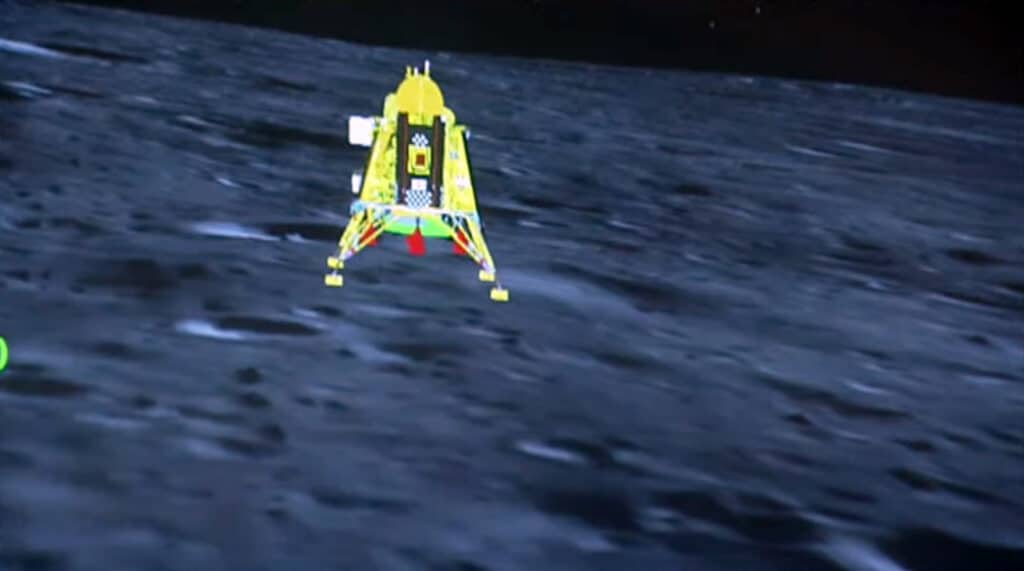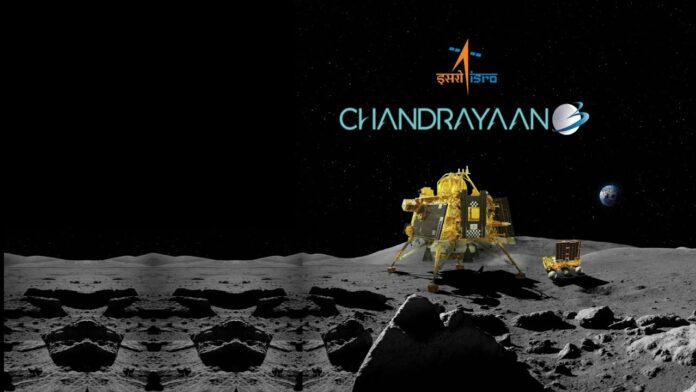On August 23, 2023, ISRO made history by successfully landing India’s Chandrayaan-3 mission on the Moon’s south pole. The Lander achieved a soft landing on site around 18.03 Hrs. IST.
The Lander arrived at the designated point around 17:44 Hrs. IST. Upon receiving the ALS command, the LM activated the throttleable engines for powered descent.
The mission begins its journey on July 14, 2023. ISRO launched its ambitious third lunar mission, Chandrayaan 3, at 2.35 PM IST from SDSC SHAR, Sriharikota.
To demonstrate end-to-end capability in safe landing and wandering on the lunar surface, Chandrayaan-3 is a follow-up mission to Chandrayaan-2. It consists of Lander and Rover configurations.

The Lander has the capability to soft land at a specified lunar site and deploys the Rover, which will carry out in-situ chemical analysis of the lunar surface during its mobility. There are scientific payloads on the Lander and the Rover that will conduct lunar surface tests.
The landing marks India as the first country to land a spacecraft on the lunar south pole softly and the fourth country to achieve a soft landing on the Moon, after the United States.
ISRO chose Moon’s south pole to land Chandrayaan-3 because:
The Moon’s South Pole continues to be a mystery. The experts believe that water may be present in places always in darkness around it. Additionally, it is said that the Moon’s South Pole remains in darkness for a far bigger portion of the day than its North Pole, raising the possibility of the presence of water and minerals there.
According to ISRO, the South Pole region of the Moon has craters that are cold traps and contain a fossil record of the early Solar System. The shadowed craters are thought to contain close to 100 million tons of water. Its regolith contains traces of hydrogen, ammonia, methane, sodium, mercury, and silver, making it a previously undiscovered source of vital materials. ISRO claims that its favorable geographic and elemental characteristics would constitute a good stopping point for upcoming space travel.
Scientific payloads on the Lander and the Rover:
Lander payloads: Chandra’s Surface Thermophysical Experiment (ChaSTE) to measure the thermal conductivity and temperature; Instrument for Lunar Seismic Activity (ILSA) for measuring the seismicity around the landing site; Langmuir Probe (LP) to estimate the plasma density and its variations. A passive Laser Retroreflector Array from NASA is accommodated for lunar laser ranging studies.
Rover payloads: Alpha Particle X-ray Spectrometer (APXS) and Laser Induced Breakdown Spectroscope (LIBS) for deriving the elemental composition near the landing site.
